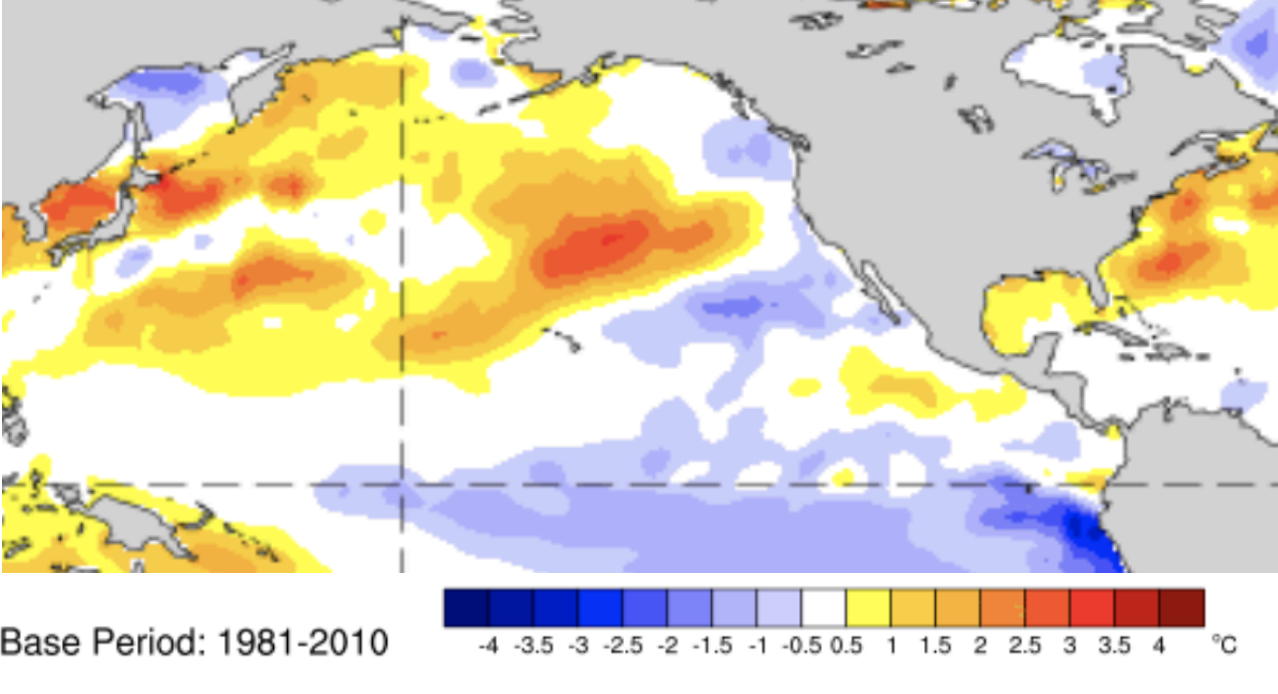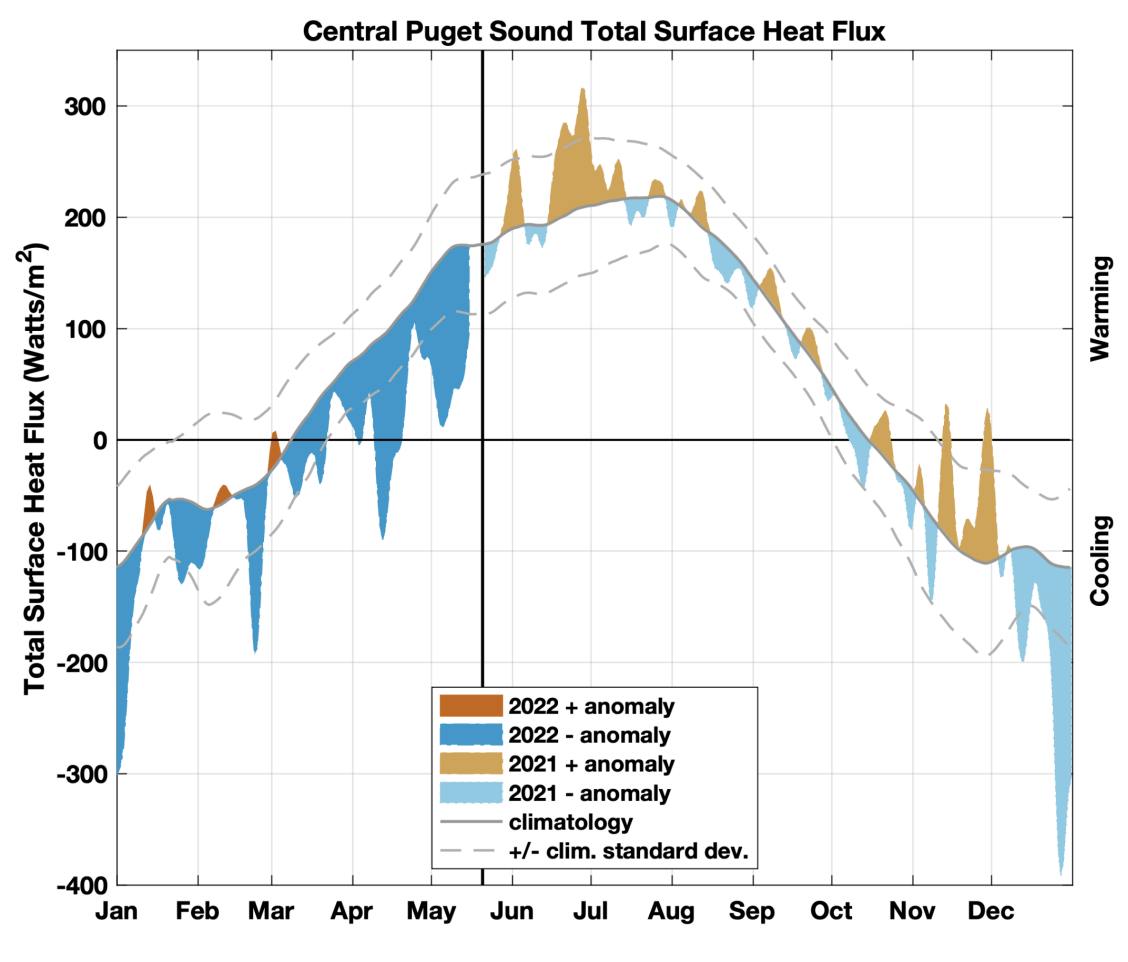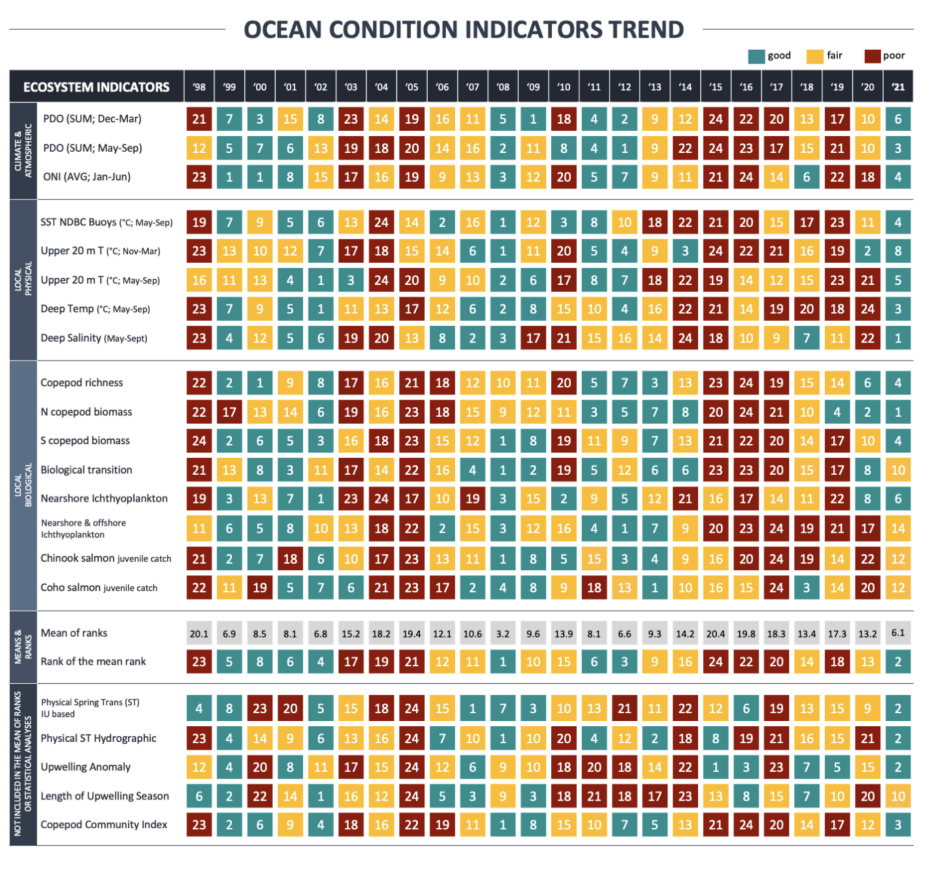Cool Waters off the Coast of the PNW and in the Puget Sound
We have enjoyed a cool spring in WA state and perhaps it is no surprise that regional ocean temperatures are also on the cool side. A sea surface temperature (SST) anomaly map for a 7- day period near the end of May 2022 (Figure 1) shows negative anomalies off the coast of the Pacific NW, and in the central and eastern tropical Pacific Ocean (more about the latter below). Cool near-surface temperatures are also present in Puget Sound; surface water temperatures at the NOAA tide gauge in Tacoma are about 0.7°F cooler during the last week of May 2022 than the same interval in 2021.

While a quantitative analysis is beyond the scope of the present piece, it appears that the cold waters off the Pacific Northwest coast can be attributed to our recent cloudy and cool weather. Often SSTs along the coast reflect the sense of the winds, with winds from the north forcing upwelling of relatively cold water from below. There were some periods of upwelling wind anomalies during the past winter, but the past spring has included overall wind anomalies along the coast from the southwest (not shown), which implies suppressed upwelling. Instead, our tentative interpretation is that the negative SST anomalies are due to the unsettled weather that has brought cool air temperatures, clouds and occasional storms that promote vertical mixing in the upper ocean, which also tends to cool near- surface waters. This weather may be due, at least in part, to La Niña. The NINO3.4 index was at -1.1°C during April 2022, a value which ties with 1950 for the strongest negative anomaly in the record for the month of April. From a local perspective, the anomalous atmospheric forcing of the ocean is apparent in the real-time data from the Puget Sound dashboard – reviewed in the February 2022 edition of this newsletter – which shows negative anomalies in atmospheric heating greater than 100 W/m2 and more than one standard deviation from normal at times during the past April and May (Figure 2).

climatology (Puget Sound Metrics Dashboard).
We expect that most residents of WA state may be more than ready for some warmer temperatures typical of late spring. On the other hand, the inclement weather has had some silver linings. Since our focus here is on ocean conditions, we would like to point out that the relatively cool waters along the Pacific Northwest coast are favorable for a variety of marine species including salmon. A “stoplight” plot from NOAA’s Northwest Fisheries Science Center (Figure 3) illustrates how the last two years represent a turnaround from recent warm years including the major marine heat wave of 2014 into 2017 (aka the Blob) with an additional period of poor conditions on its heels in 2019-20. Assuming no big changes in regional ocean conditions relative to historical norms over the next couple of seasons, perhaps there will be at least decent returns of adult salmon from the year classes entering the marine environment this year.
